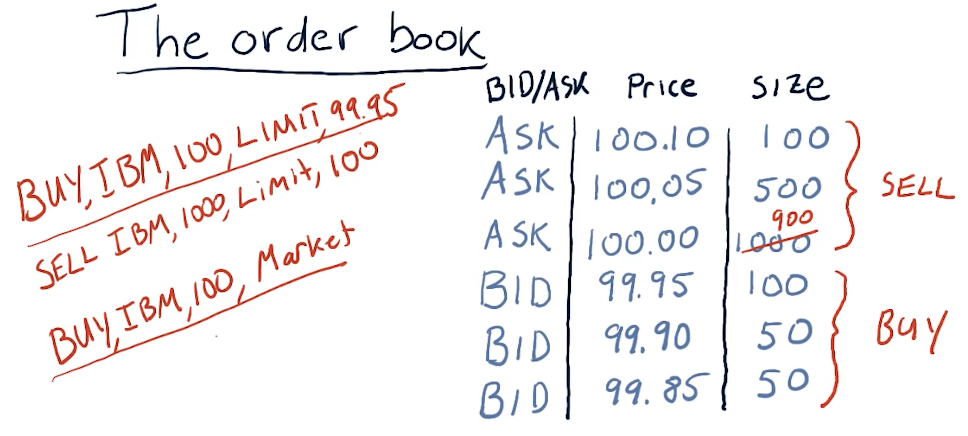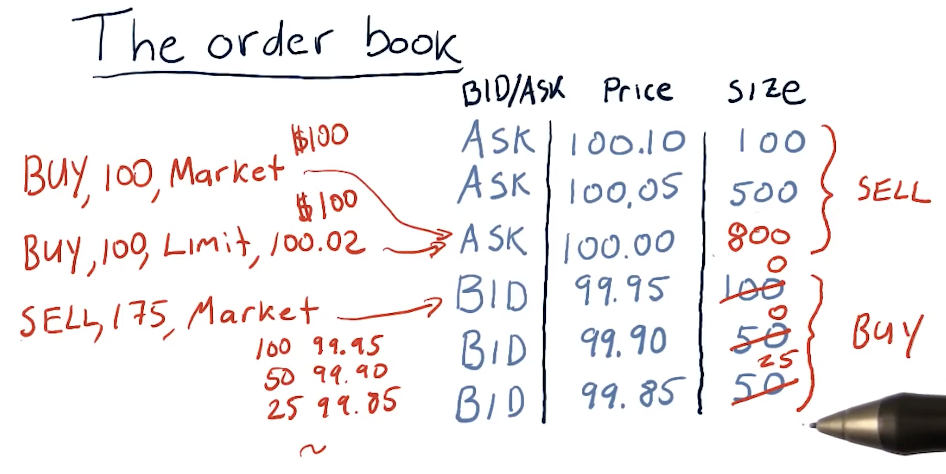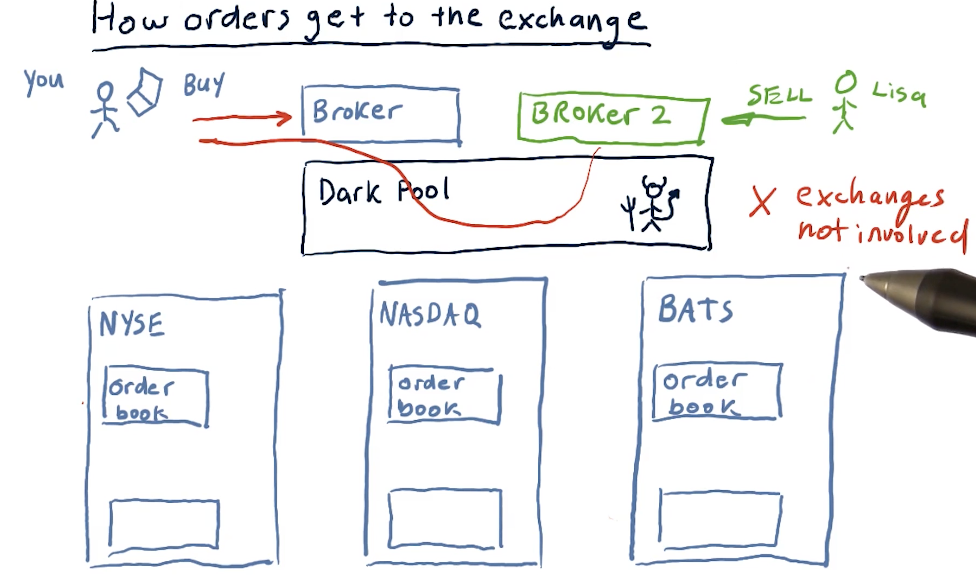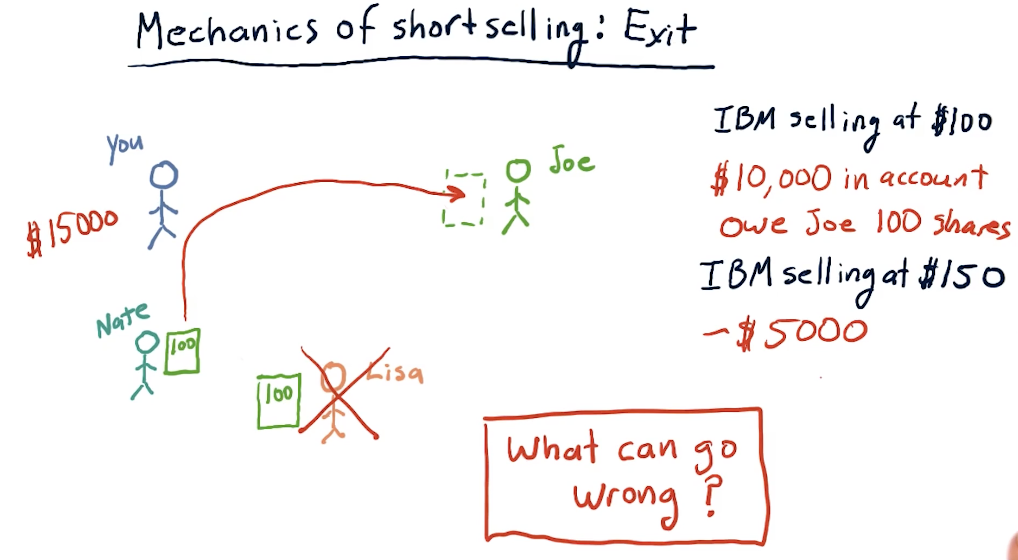2-2: Market mechanics
This lesson covers some fundamentals of how orders are handled on the market.
What is an order?
Usually orders are sent to a stock broker and are executed on your behalf. Below is all the information that must go into a well-formed order:
- Buy or sell
- Symbol
- Number of shares
- Limit or Market
- Market specifies that you're ok with buying or selling at the current market's price.
- A limit specifies that you're asking for a specific price.
- Price
The order book
Below is a high-level overview of what a market's order book could look like during a trading day - provided by the lecture.

How orders affect the order book
The lecture provides a high-level overview of how the order book is affected by buy and sell orders in the market. In this example, all buy and sell orders are market orders.

How orders get to the exchange
The lecture provides a high-level overview of how orders reach the exchange after being received by the brokers. The image below describes the existence of dark pools - I'm not sure how these are legal.

How hedge funds exploit market mechanics
Hedge funds have the ability to be co-located with the exchanges, so they can see trends in stocks faster than those who are trading remotely via brokers. Using this, they exploit the time different to buy and sell stocks at a profit. They also conduct this exploit across continents with different exchanges. A high-level overview from the lectures is provided below:

Additional order types
- Stop loss - sell the stock when it loses a certain amount of value
- Stop gain - sell the stock when it gains a certain amount of value
- Trailing stop
- Sell short - take a negative position against a stock
Short selling
Short selling is a strategy where we borrow stocks from someone, sell those stocks to someone looking to buy, and then when the person we borrowed from wants their stock back, we buy the stock and give the stock back as promised. What we're hoping for is that the stock decreases in value, allowing us to buy the stock at a lower price, netting us a profit.
What can go wrong?
In short selling, we can have an unlimited amount of losses. If the stock increases, we sell back at a loss, and we must give back the stock when the person we borrowed from wants their stock back.
